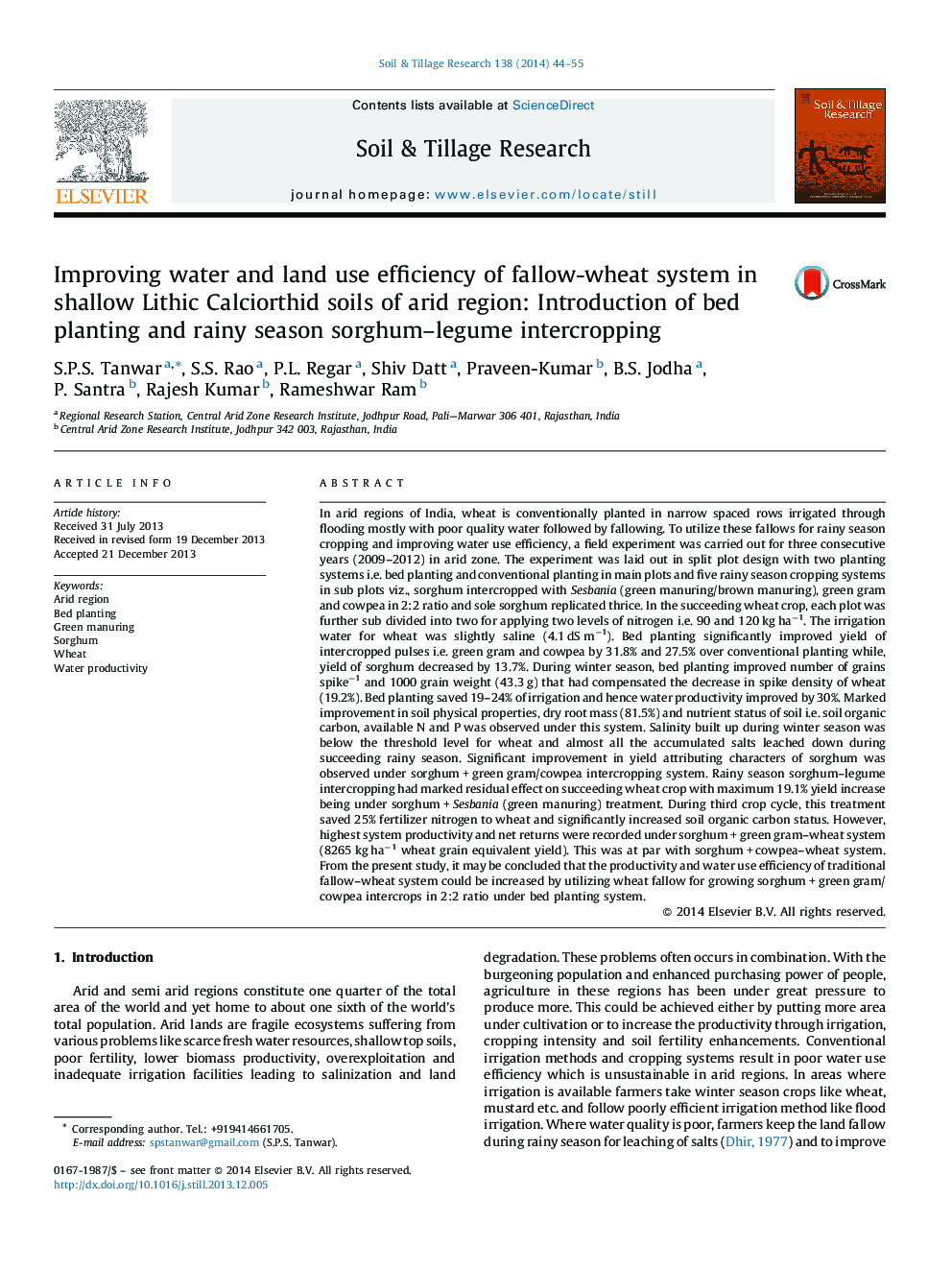| کد مقاله | کد نشریه | سال انتشار | مقاله انگلیسی | نسخه تمام متن |
|---|---|---|---|---|
| 305767 | 513049 | 2014 | 12 صفحه PDF | دانلود رایگان |
• Fallow after wheat was replaced by sorghum + legume (green gram/cowpea) intercropping without affecting wheat productivity.
• Bed planting improved legume yield over conventional in sorghum + legume system.
• Bed planting in wheat increased water productivity by 30%.
• Saving of 25% fertilizer N in wheat was achieved after 3 years of sorghum + Sesbania (green manuring) cultivation.
• System productivity of sorghum + green gram/cowpea–wheat was higher than of Sorghum + Sesbania–wheat system.
In arid regions of India, wheat is conventionally planted in narrow spaced rows irrigated through flooding mostly with poor quality water followed by fallowing. To utilize these fallows for rainy season cropping and improving water use efficiency, a field experiment was carried out for three consecutive years (2009–2012) in arid zone. The experiment was laid out in split plot design with two planting systems i.e. bed planting and conventional planting in main plots and five rainy season cropping systems in sub plots viz., sorghum intercropped with Sesbania (green manuring/brown manuring), green gram and cowpea in 2:2 ratio and sole sorghum replicated thrice. In the succeeding wheat crop, each plot was further sub divided into two for applying two levels of nitrogen i.e. 90 and 120 kg ha−1. The irrigation water for wheat was slightly saline (4.1 dS m−1). Bed planting significantly improved yield of intercropped pulses i.e. green gram and cowpea by 31.8% and 27.5% over conventional planting while, yield of sorghum decreased by 13.7%. During winter season, bed planting improved number of grains spike−1 and 1000 grain weight (43.3 g) that had compensated the decrease in spike density of wheat (19.2%). Bed planting saved 19–24% of irrigation and hence water productivity improved by 30%. Marked improvement in soil physical properties, dry root mass (81.5%) and nutrient status of soil i.e. soil organic carbon, available N and P was observed under this system. Salinity built up during winter season was below the threshold level for wheat and almost all the accumulated salts leached down during succeeding rainy season. Significant improvement in yield attributing characters of sorghum was observed under sorghum + green gram/cowpea intercropping system. Rainy season sorghum–legume intercropping had marked residual effect on succeeding wheat crop with maximum 19.1% yield increase being under sorghum + Sesbania (green manuring) treatment. During third crop cycle, this treatment saved 25% fertilizer nitrogen to wheat and significantly increased soil organic carbon status. However, highest system productivity and net returns were recorded under sorghum + green gram–wheat system (8265 kg ha−1 wheat grain equivalent yield). This was at par with sorghum + cowpea–wheat system. From the present study, it may be concluded that the productivity and water use efficiency of traditional fallow–wheat system could be increased by utilizing wheat fallow for growing sorghum + green gram/cowpea intercrops in 2:2 ratio under bed planting system.
Journal: Soil and Tillage Research - Volume 138, May 2014, Pages 44–55
